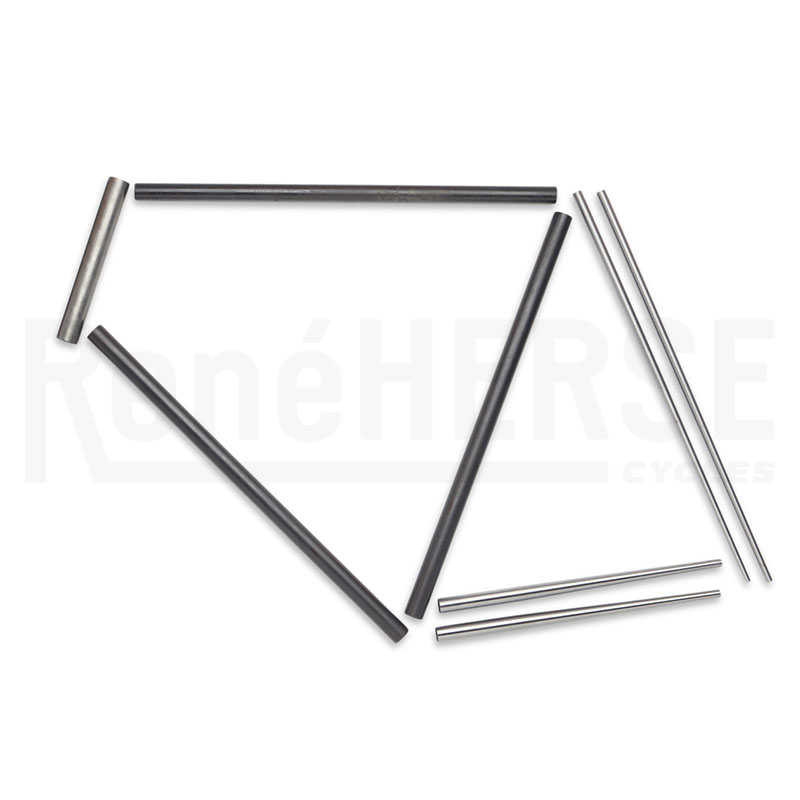Tubesets for Our Bikes: Superlight
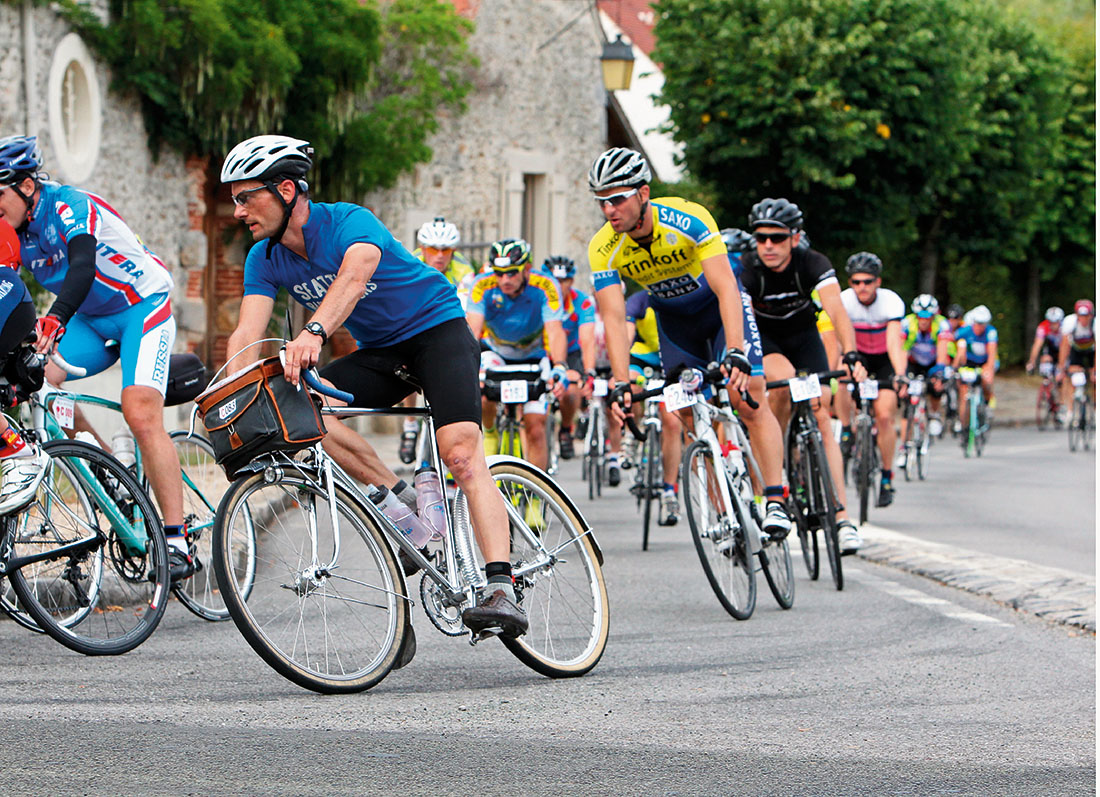
In addition to individual Rene Herse x Kaisei frame tubes, we offer three tubesets. Each tubeset is based on bikes that we have found to work extremely well. These bikes have distinct characters that I’ll describe in a series of blog posts.
The Superlight tubeset is just that – the lightest, thinnest-wall tubeset you can buy today. In the unbutted center sections (“bellies”), the tube walls measure just 0.4 mm. At the butted ends, they go up to 0.7 mm for strength at the joints. We offer the Rene Herse x Kaisei tubes in two lengths, with “bellies” optimized for short and tall frames.
What does a bike built from the Superlight tubeset feel like on the road?
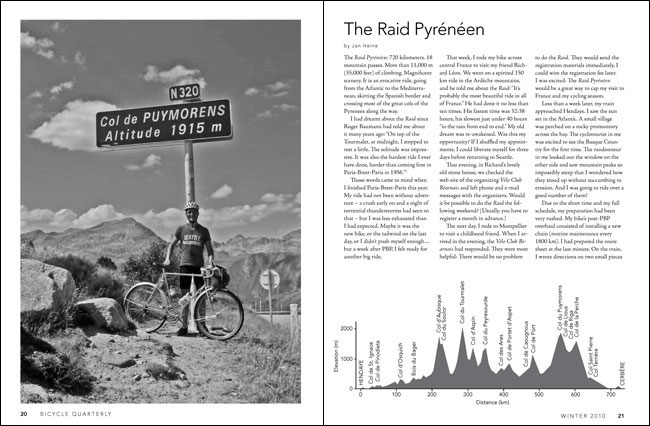
My René Herse (above) is made from tubes with these dimensions. It’s my favorite bike for spirited rides. It’s the bike that exemplifies ‘planing’ for me – a bike that gets in sync with my pedal strokes, and always seems to entice me to go faster. It’s the bike that I’ve ridden on some of my memorable rides, whether it’s ‘Charly Miller’ times in Paris-Brest-Paris (top photo) and in the Cascade 1200 brevet, or in the Raid Pyrénéen that goes non-stop from the Atlantic to the Mediterranean via 18 mountain passes (above).
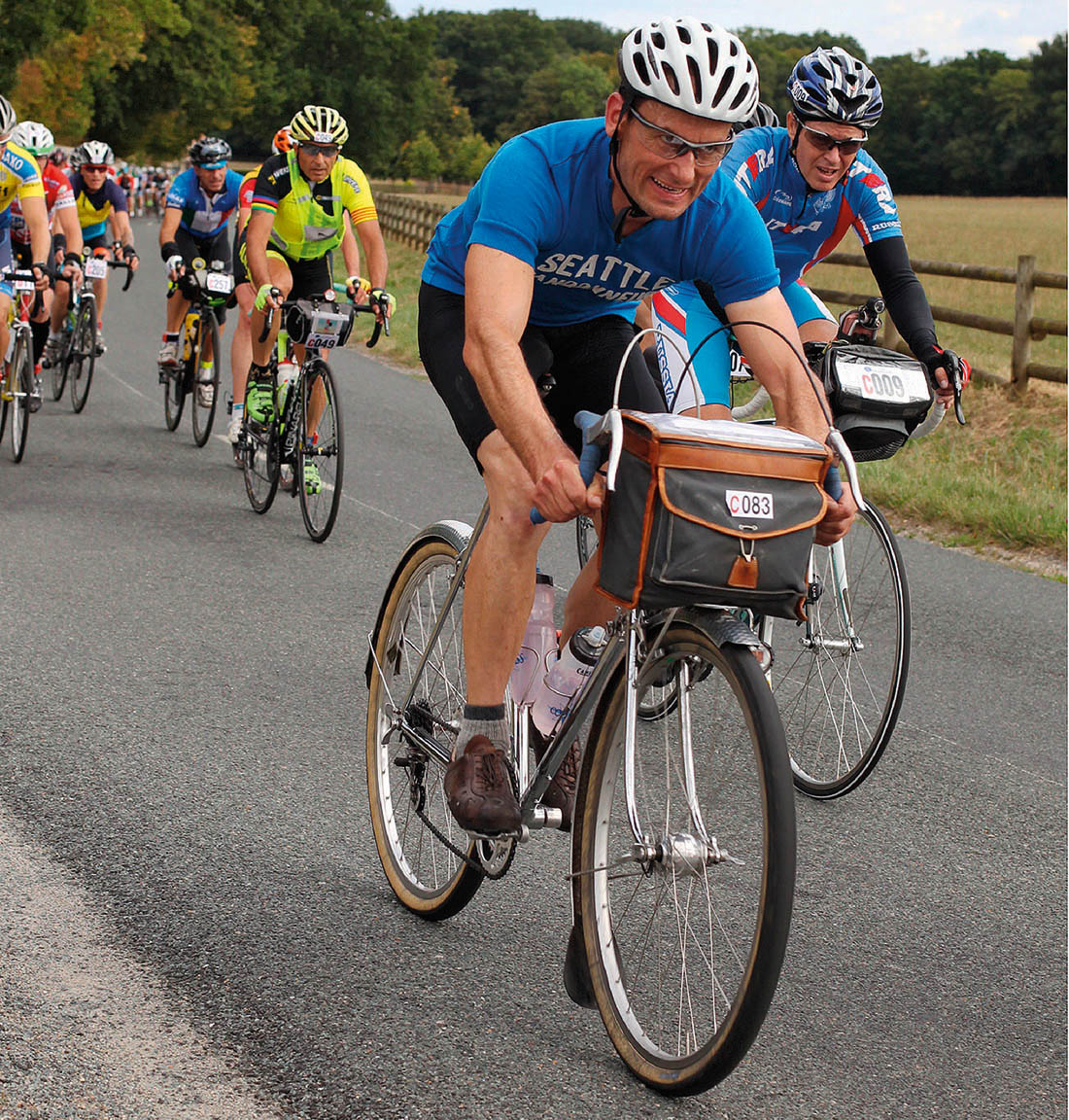
In all these performances, the bike deserves a lot of credit. On long rides, it really helps to have a bike with just the right flex characteristics to synch with my pedal strokes. Pedaling becomes a subconscious routine. When we say that steel bikes can offer the same performance as modern racing bikes, it’s these bikes we are talking about.
The same characteristics make me pick the Herse for fast Saturday morning spins with the BQ Team. When we race each other up the Cascade foothills, this is the bike that I find easiest to pedal hard. It’s the fastest in these impromptu sprints because it lets me put out the most power. Compared to my other bikes, I am breathing harder at the top of the climbs, and I am more tired when I get home. And my smile is bigger, too.
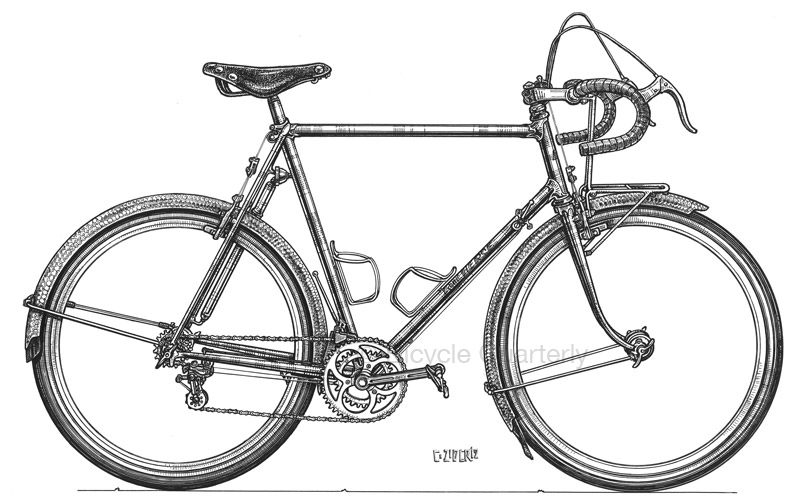
The tubeset not only defines this bike’s performance, but also its feel. It always feels light, like a racehorse. Whether you like that or not depends on your taste in bikes. A very strong rider probably would find the superlight tubeset too flexible, but remember that Andy Hampsten won the 1988 Giro d’Italia on a bike made from tubes with the same dimensions. I was lucky enough to ride Hampsten’s bike once, so I can report that it feels very similar to my Herse.
While my Herse is equipped with some classic components, you could use ‘modern’ brake levers and derailleurs without changing the feel of the bike. With a different fork, you even could use disc brakes…
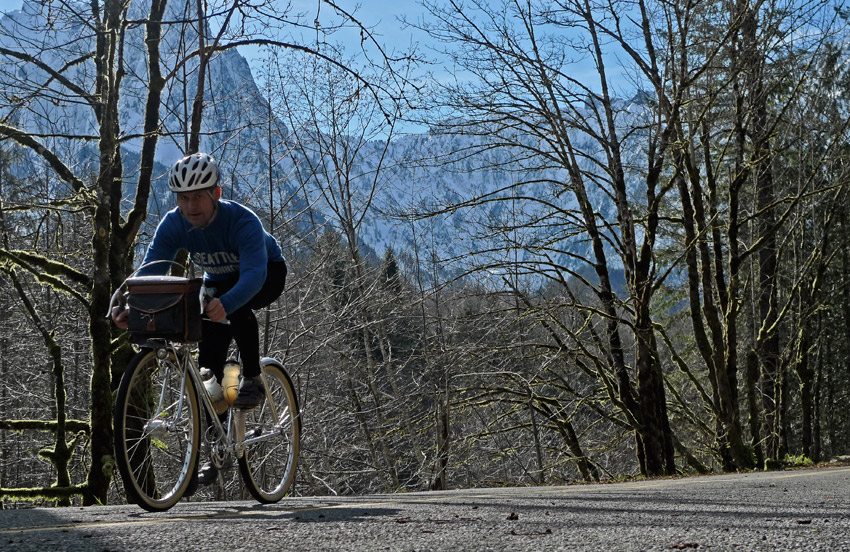
How about descending on a bike this ‘flexible’? Despite rumors to the contrary, it feels the same as other bikes. When you look at the physics, you realize that the bike is always balanced, no matter how hard you corner. Otherwise, it would fall over. There are no significant side loads that could flex the bike when you are coasting.
Our on-the-road experience has confirmed this: During our ground-breaking double-blind test of frame stiffness, none of us felt any differences between the bikes on the downhills – whereas on the uphills, both Mark and I were measurably faster on the two bikes with superlight tubesets.
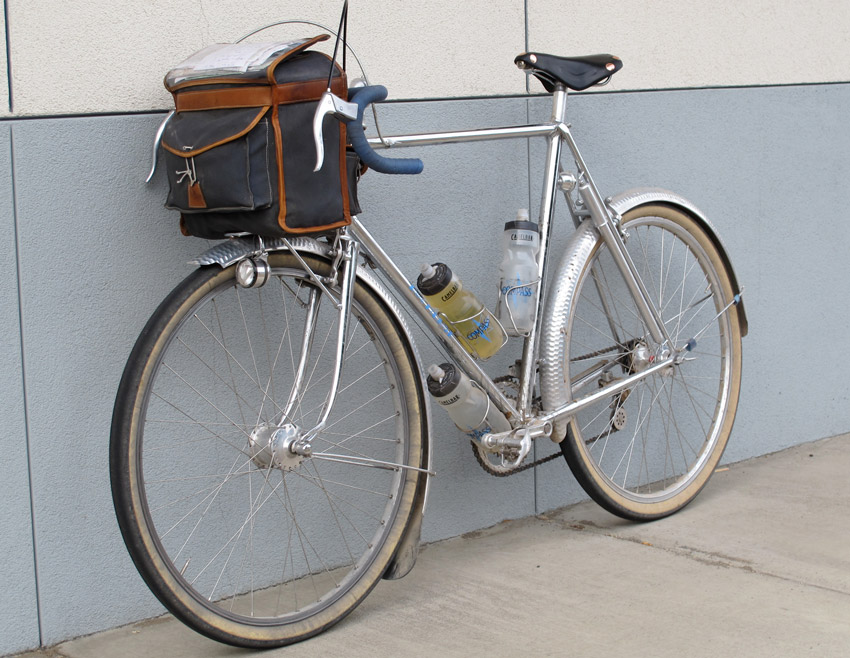
What about the durability? You often hear the description ‘paper-thin’ for tubes this light, but when you pick up a raw tube, you realize that it’s actually quite sturdy. Most of all, the walls at the ends measure 0.7 mm – not much thinner than those of other tubes (0.8-0.9 mm). And since frames rarely break in their unbutted center sections, I am not worried about the longevity, either.
I’ve ridden my Herse for 6 years now, including the 360-mile Oregon Outback gravel race. After that ride (above), my rims had developed cracks (I use better ones now!), and my spare spokes had worn through the cloth tape I used to attach them to the fender stays, but the rest of the bike was no worse for wear.
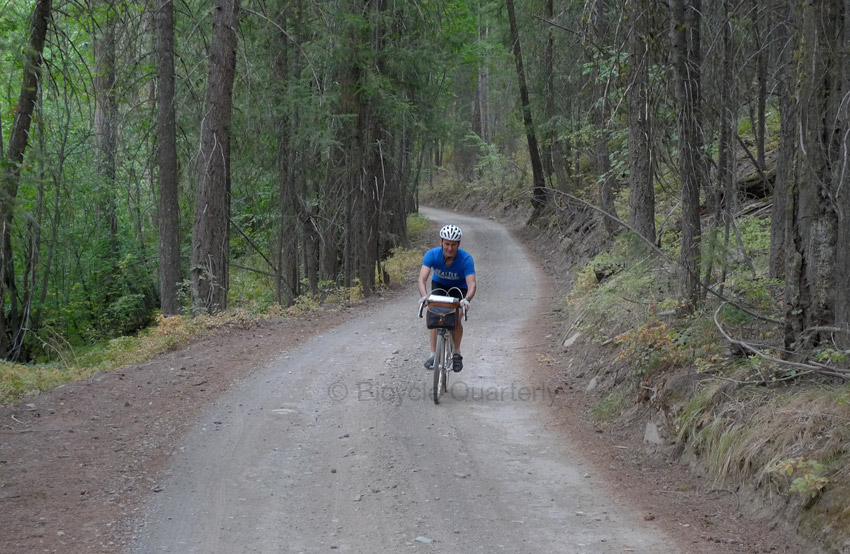
Why not build all bikes from this tubing? First, there is the lightweight feel that some riders don’t enjoy. It really depends on your power, your riding style – these bikes work best with a light touch on the handlebars – and your preferences. Furthermore, with a tubeset this light, these bikes are more prone to shimmy. It hasn’t been an issue on my Herse, but that bike uses a needle bearing headset that dampens the steering slightly. Also, I wouldn’t recommend this tubeset on a bike that commonly carries a heavy load. The Herse is fine with a heavily loaded handlebar bag, but if I were to ride a lot with loaded front low-riders, I’d pick a stiffer down tube.
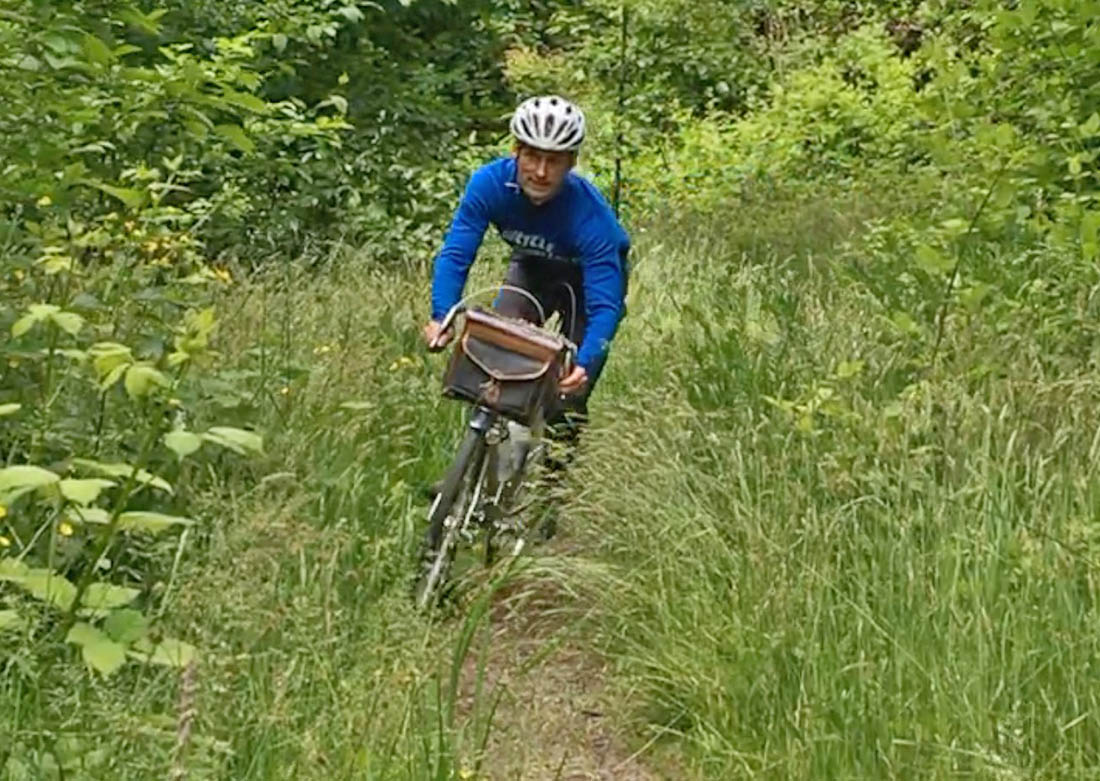
One last datapoint is that I am 181 cm tall (5’11”) and weigh 70 kg (154 lb). I ride a relatively large frame (58 cm seat tube, 57 cm top tube, c-c). Shorter tubes are inherently stiffer, so I feel that this tubeset makes even more sense for smaller frames. On the other hand, taller or significantly heavier riders may need a stiffer tubeset. Fortunately, we offer those as well.
The final tubing selection for your bike is something to discuss with your frame builder, who will design your frame based your build, riding style, preference, and intended use of the bike. All our Rene Herse x Kaisei tubesets offer excellent performance that comes with a carefully designed balance of frame stiffness. As a Rene Herse exclusive, we offer our tubesets in two lengths, so you can get tubes optimized for your frame size. All tubes we sell feature Kaisei’s unmatched quality and experience that comes from supplying the tubes for the frames of thousands of professional Keirin racers. We import these tubes because we feel that there are no better tubes anywhere.
Further Reading:
- ‘Mule’ tubeset with a stiffer down tube and superlight top tube
- ‘Oversize’ tubeset for stiffer frames
- Bicycle Quarterly back issues with our research about frame stiffness


